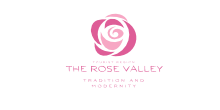Sopot, one of the old Bulgarian settlements, older than Karlovo and Kalofer, was founded in the 14th century. The only written source for its earliest history is the Karlovo vakfname, the original text of which was written in Konya in Arabic. In 1847, a copy of the document was made in Constantinople and certified accordingly. It is kept in the Karlovo History Museum. The document testifies that at the end of the 14th century, adjacent to the large village of Shahin or Shushitche /village of Sushitsa/ there was also the village of Akche Klisa /Byala Cherkva, en: White Church/.
The Turkish name Akce Klisa or Akce Klise was given to Sopot because of the Church of the Holy Virgin – the white church that could be seen from afar on the Trapeto hill. It was built even before the Turkish invasions of the Bulgarian lands. It was burned and destroyed in July 1877, along with almost the entire town. The apse of its altar was built into its ruins.
The revival livelihood of the town is connected with the rivers Leevitsa and Manastirska, which spring from the Balkan. The Leevitsa river, which is quite turbulent in the spring, has 5 picturesque waterfalls, the highest and most beautiful of which is Skokat (en: the Jump). The beautiful river becomes scary when the snow melts, it becomes turbulent and drags huge rocks. That is why Sopot residents called it "Murla." Near the Sveti Spas monastery, Manastirska river flows, which supplies water to Sopot.
Along the course of the two rivers, there were many sawmills and premises with braiders – gaitandzhiistvo (textile braiding) became the main livelihood of the revivalist Sopot. More than 30 trades flourish here: wool, spinning, weaving (wool, hemp, linen, cotton, fur, silk are woven), carpet making, embroidery, tailoring, furriers, carpet making, millinery, rose oil extraction, dyeing, basmadzhiystvo (art printing on textile), glass making, papoukchijstvo (shoe making), copper smithery, etc. Sopot was deservedly called "Kyučuk Manchester" (Little Manchester) and "Gerjik Sopot" (Beautiful Sopot).
In connection with the production of rose oil, the first glass factory on the Balkan Peninsula was established in the town. The glassware produced was "blackish and not quite transparent", but it was the first of its time.
Sopot is connected with the heroic exploits of the voivodes Kara Ivan, Dobril, Velyu, Bogdan, with the work of the apostles Vasil Levski and Todor Kableshkov, with the bright names of Sopot residents – participants in the two Bulgarian legions, in the units of Philip Totyu, Panayot Hitov, Hristo Botev and in the Bulgarian volunteers group.
Sopot is the hometown of the national writer Ivan Vazov, of the prominent Revival teacher Nedelya Petkova, of Father Kiril Slepov – one of the prominent actors of the April Uprising and associate of Georgi Benkovski, of the people's enlighteners and patriots Averkiy Petrovich, Father Kiril Nektariev, Kalist L. Hamamdzhiev and many more. The distinguished generals Georgi Vazov and Vladimir Vazov, the world-famous traditional healer Ivan Raev and others were born here.
Sopot is famous for its schools during the National Revival – cell and class schools – one of the first in enslaved Bulgaria. The fact that for the period 1835-1875 it had 1803 supporters of revival literature, 282 of them for ecclesiastical, the rest for secular, testifies to the town's culturally enlightened status. For several years, the handwritten humorous newspaper Osten was written and published in Sopot.
